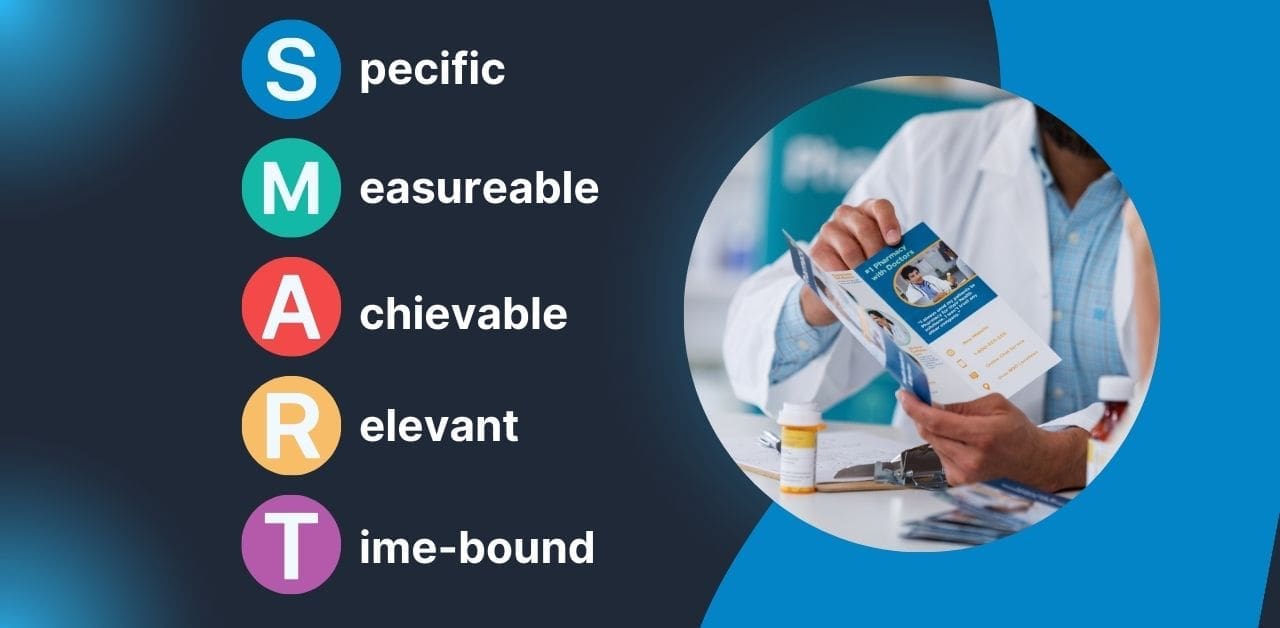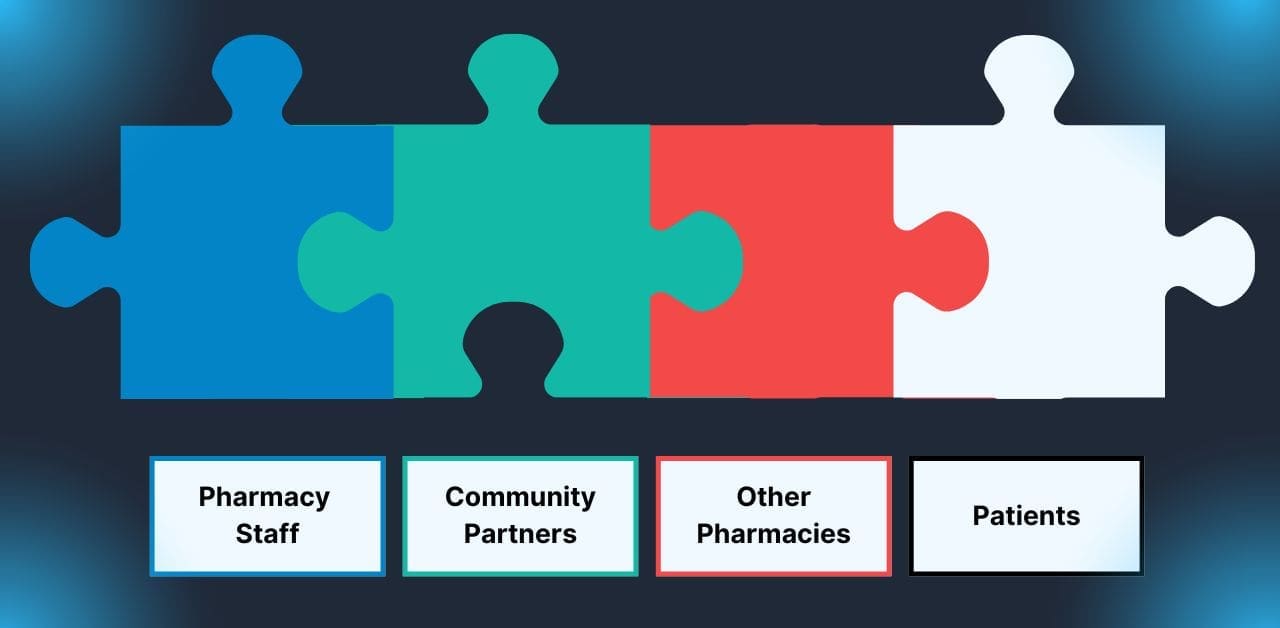In response to the nationwide epidemic of opioid misuse, pharmacies of all sizes are stepping up to make improvements to their opioid stewardship program. However, ensuring that an opioid stewardship program is truly impactful requires precise measurement and evaluation. This guide outlines key strategies for maintaining effective opioid stewardship initiatives across all areas of the pharmacy.
Setting SMART Goals for Effective Opioid Stewardship

Before diving into the details of everything, it is important to look at the big picture first. Think back to the reasons why the pharmacy implemented an opioid stewardship program in the first place. With this in mind, mentally reflect on whether or not the program is pushing the pharmacy towards effective opioid stewardship. If the answer is yes, find out what aspects of the program contribute the most to its success and come up with ways to improve the existing foundation. If the answer is “no”, then it may be best to dissect the problem deeper and make key changes to the program’s foundation.
A good way to help keep pharmacies on track of these broader long-term goals is to establish smaller Specific, Measurable, Achievable, Relevant, and Time-bound (SMART) goals that focus on opioid misuse prevention. Think about SMART goals as checkpoints, or smaller goals within the overarching goals of the opioid stewardship program. SMART goals will vary based on each pharmacy’s unique context and patient population. Examples of SMART goals include:
- Reducing the number of high-dose opioid prescriptions dispensed by 10% within six months.
- Increasing patient counseling on opioid risks and safe use by 20% within one year.
- Increasing the number of naloxone kits dispensed to at-risk patients by 50% within two years.
Identifying Key Metrics and Data Sources
After implementing an opioid stewardship program, it is crucial to track progress using key metrics and data sources. The metrics obtained from these data sources should be quantifiable and adaptable as both overall goals and SMART goals evolve to better fit a pharmacy’s changing environment. Examples of key metrics and data sources that are useful for goal tracking include:
Key Metrics:
- Opioid dispensing rates: Track the number of opioid prescriptions dispensed, average daily morphine milligram equivalents (MMEs) per patient, and the proportion of patients receiving high-dose opioids.
- Naloxone dispensing rates: Track the number of naloxone kits dispensed to at-risk patients and the proportion of opioid prescriptions co-dispensed with naloxone.
- Adverse events: Track the incidence of opioid-related adverse events, such as overdoses, respiratory depression, and an overall decrease in health.
Data Sources:
- Pharmacy dispensing records
- Patient profiles
- Electronic health records (EHRs), if available
- Patient surveys
Evaluating Opioid Misuse Prevention Efforts
Based on goals and collected data, pharmacies need to implement changes to optimize the effectiveness of interventions targeting opioid misuse prevention. Evaluating the impact of these interventions involves comparing data before and after implementation (A/B Testing) to identify notable differences in key metrics. For instance, if a pharmacy introduces informational pamphlets on opioid abuse at the checkout counter, it should compare data from before and after implementation to assess the pamphlet’s impact on local opioid abuse.
Engaging Stakeholders and Fostering Collaboration

When aiming to implement an effective opioid stewardship program, it is crucial to avoid tunnel vision and incorporate the perspectives of all stakeholders. By gathering and giving feedback to stakeholders, pharmacies can unlock key insights that can not be found through data analysis. An effective opioid stewardship program requires collaboration and engagement from various stakeholders, including:
- Pharmacy staff: Educate staff on the importance of opioid misuse prevention, train them on relevant policies and procedures, and empower them to actively participate in the program and provide feedback.
- Patients: Engage patients in conversations about their pain management needs, educate them on opioid risks and benefits, and encourage safe use practices. Ask them relevant questions related to effective opioid stewardship and gain feedback through questionnaires and surveys.
- Other pharmacies: Collaborate with other pharmacies in the community to share effective opioid stewardship practices, data on prescribing patterns, and strategies for inventory management.
- Community partners: Collaborate with local law enforcement, public health agencies, and other community organizations to address the broader opioid crisis. Learn about the opioid crisis from their perspective and the trends they notice surrounding opioid misuse prevention in the community.
Continuous Quality Improvement
It is important to understand that measuring and evaluating an opioid stewardship program should be an ongoing process, not a one-time event. An effective opioid stewardship program is dynamic and should evolve to meet the community’s needs. Pharmacies should regularly review data, assess progress towards goals, and identify areas for improvement. By using this information to refine their program and make necessary adjustments, pharmacies can stay ahead of the ever-changing landscape of the opioid epidemic.
Key Takeaways
- Measuring and evaluating the success of an opioid stewardship program is crucial to ensuring its effectiveness and making a real difference in opioid misuse prevention.
- Establish clear goals, identify key metrics, and engage stakeholders to create a robust and impactful program.
- Continuous quality improvement is crucial for adapting an opioid stewardship program to meet evolving challenges and enhance patient outcomes.
By following these steps, pharmacies can play a vital role in opioid misuse prevention and safeguarding the health and well-being of their communities. While this checklist from the Health Services Advisory Group (HSAG) is designed for hospitals, it contains many useful questions that pharmacies can use to assess their opioid stewardship program.
